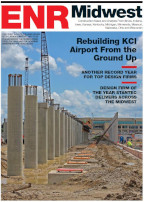On Nov. 11-17 of this year, the U.S. Commercial Service of the Dept. of Commerce’s International Trade Administration is leading a trade mission of U.S. companies to explore Vietnam's and Indonesia’s infrastructure markets. Together, these countries are undertaking billions of dollars' worth of projects in sectors such as environmental, construction and engineering, aviation and energy—all of which hold great promise for U.S. exporters looking for growth opportunities. Sarah Kemp and David Gossack, senior commercial counselors with the U.S. embassies in Vietnam and Indonesia, discussed these opportunities in a question-and-answer format.
Can you describe the details of the trade mission?
Kemp: The mission, led by the undersecretary for international trade, Francisco Sánchez, is an excellent opportunity for participating U.S. businesses to learn about and develop connections in one of the most vibrant and fast-growing regions of the world. The mission will visit Hanoi and Ho Chi Minh City in Vietnam and Jakarta in Indonesia. In each of the three cities visited, participants will receive market briefings, meet with key government decision-makers and prospective private-sector partners during individualized, one-on-one meetings. During the mission, Undersecretary Sánchez will hold bilateral meetings with Vietnamese officials to advocate for U.S. companies, discuss market-access issues and find ways to bring bilateral relations to the next level.
Gossack: The mission is a real opportunity for participating U.S. businesses to meet face-to-face with prospective partners in these two dynamic Southeast Asian countries, where we are seeing some of the greatest opportunities for U.S. businesses. The mission is also bolstered by the participation of partner federal agencies: the U.S. Export-Import Bank, the U.S. Trade and Development Agency and the Overseas Private Investment Corp. (OPIC). During the mission, Sánchez will also advocate for U.S. companies and work to advance bilateral relations with Indonesian government officials.
Why should U.S. businesses be looking at these two countries?
Kemp: Since the mid-1990s, Vietnam has set itself on a course toward free-market reforms and, in the last 10 years, has placed itself on a path to removing many barriers to trade. In 2007, the U.S. and Vietnam signed the Trade and Investment Framework Agreement, which established a formal channel for bilateral and regional trade and investment discussions. Furthermore, Vietnam is also a negotiating partner to the proposed Trans-Pacific Partnership, which has the potential to become one of the most economically robust free-trade agreements of the 21st century. The focus is definitely on development and growth, which is very good for the U.S. and Vietnam. Despite a recent slowdown, Vietnam has experienced some of the highest GDP growth rates in the world in the last decade and is committed to forging ahead on its path to development.
Gossack: Indonesia has a large population of nearly 240 million. The country has enjoyed steady, strong growth in the last decade, reaching a 6.2% growth rate last year. Indonesia now ranks as the 16th largest economy in the world, and its rapidly growing middle class means there is a new demand for a range of new infrastructure, from toll roads to airports to municipal water systems. President Obama launched the U.S.-Indonesia Comprehensive Partnership in 2010, and there is wide range of bilateral activities that have enhanced the American profile there, including for business. We have seen a significant increase in the number of American companies operating here, reflecting the fact that Indonesia’s economy now comprises 46% of all economic output from the Association of Southeast Asian Nations (ASEAN). Indonesia is now mentioned in the same breath as Brazil, Russia, India and China, the so-called BRIC nations.
Since the target is infrastructure, what sectors are we talking about?
Kemp: The lack of clean water is one of the most urgent environmental concerns in Vietnam. Currently, there are over 240 water treatment plants in Vietnam, producing over 4.7 million cubic meters per day for urban consumption. However, these plants meet only about 70% of demand. There simply is not enough clean water to sustain Vietnam’s growth, so major infrastructure projects are being formulated, with some of the funding coming from the state and some backed by international lenders, such as the Asian Development Bank (ADB). For example, in 2011, the ADB approved financing for the development of the water-supply and sanitation sector in the amount of $1 billion over the next 10 years. This funding is in addition to state-backed financing for water production plants and distribution networks totaling hundreds of millions of dollars.
Energy also presents a potent opportunity for U.S. firms. The Vietnamese government expects electricity consumption to grow by 17% annually through 2015. It is also estimated that an additional capacity of 4,000 MW will be required per year on average during the 2012-15 time period to meet the rapidly growing demand for power. Today, the electricity grid in Vietnam is characterized, for the most part, by low efficiency in energy transmission and high waste in usage. These factors present an opening for those who provide grid modernization technologies and solutions. Mission participants will have a unique opportunity to attend a regional ASEAN smart-grid and power workshop in Hanoi, organized by the U.S. Trade and Development Agency. Vietnam is actively building its nascent renewable and civilian nuclear power sectors to meet energy needs, which also presents openings for U.S. firms. Other high-demand areas in energy exist in design engineering services, project management, engineering, procurement and construction.


